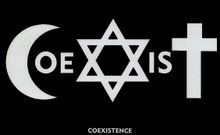Backdrop of 1 Timothy
"It will greatly help you to understand scripture if you note – not only what is spoken and written, but of whom and to whom, with what words, at what time, where, to what intent, with what circumstances, considering what goes before and what follows."~Miles Coverdale
Before we delve into the internal problems of 1 Timothy 2:9-15, I want to note the context of 1 Timothy as a whole. Many scholars compare reading the letters of Paul to listening to one side of a telephone conversation. Since we do not have the letters written to Paul or know for certain the entire context or the exact matters he is addressing, it can be difficult to extrapolate the original intent and application of Paul's words and instructions. Plucking obscure verses out of their original context to establish universal all-time binding mandates without acknowledging the the full range of probable and possible meanings is a lazy and foolish practice. Just because taking the face value reading is the easiest method, doesn't mean it is the right method or the most accurate method.
1 Timothy is a NOT a letter to a church, but a personal letter, giving instruction to Timothy. Paul is instructing Timothy on how to handle the onslaught of false teaching that had broken out in the church at Ephesus. Explicit instruction about and attention given to the topic of false teaching comprises 35 percent of 1 Timothy. Paul writing in this letter indicates that Ephesus was in total chaos, rebellion, and that false teachers need to be silenced (1:3-7, 18-20; 4:1-8; 5:20-22; 6:3-10, 20-21), widows were going around saying things they ought not (5:13), even the elders of the church were in such sin that they needed to be publicly called out in front of the entire body (5:20), and others had rejected the faith altogether (5:15). Men became angry and were quarreling (2:8) and women were dressing provocatively (2:9) (which history shows the dress Paul describes here is shockingly similar to the dress of pagan temple prophetesses). False doctrine was creating envy, evil suspicions, and constant friction (6:4-5). This was not a healthy, mature, grounded body, but an infant church quickly exchanging the gospel of Jesus Christ for false teachings. Drastic times call for drastic measures.
In the next posts, we will examine the kind of false teachings that were most likely infiltrating the church at Ephesus by deciphering some of the context clues within 1 Timothy, Acts, and other historical accounts. The precise nature of these false teachings bring revelatory meaning to the verses that seemingly bar women from all teaching in the presence of men. It also illuminates Paul's appeal to the creation order. After that, we will will look at the original language of 1 Timothy 2:9-15 to examine the original wording and meaning of these verses.














5 comments:
I think this hard work of getting back to context and original meanings is so important. None of us can really see how our own paradigms affect our reading of scripture until we humble ourselves, ask God to remove those, and seek only Him.
Oswald Chambers said something I love: "When we become simply a promoter or a defender of a particular belief, something within us dies. That is not believing God — it is only believing our belief about Him.... If our certainty is only in our beliefs, we develop a sense of self-righteousness, become overly critical, and are limited by the view that our beliefs are complete and settled. But when we have the right relationship with God, life is full of spontaneous, joyful uncertainty and expectancy".
I think all of us are prone to this - wherever we fall on the different issues, either "side".
I'm looking forward to this study as well. Michelle's comment sums it up exactly.
Michelle, I have read that quote from Oswald Chambers and I loved it also. I appreciate it the more I read the opinions of women on both sides of this issue in "blog land".
I found myself in the very unsettling position on another blog of defending women (wives/mothers) who work outside of the home. The question was: In light of Titus 2 and 1 Timothy, are they sinning?
It was unsettling for me because I am a firm believer that acccording to scripture, families are best served when a wife takes on the role of household manager and the husband provides.(Tia Lynn and I have debated this ad nauseum on my blog so I won't expound any further here!) But to say that woman is in sin? I drew the line there and was none too well received when I said so.
While I am secure and firm in my convictions on the roles of husbands and wives in marriage, I MUST NEVER be so dogmatic that I do not allow for the grace of God to cover those living a different lifestyle.
I'm rambling now, but when I read that quote recently it resonated with me too. Christians should be resolute (if not, what's the point of our belief?), but never judgmental.
thanks Terry, I can see your heart here and I appreciate that :)
That is an excellent quote. Both sides are definitely prone to that. All human beings are prone to this. It’s part of our fragile and complex human nature. Regardless of this egalitarian vs. complementarian issue, it’s vital to understand the original context, settings, and circumstances of the scriptures. It keeps us learning and open to various understandings of the same texts. I think it deepens grace between believers when we can respectfully disagree, while understanding each view has its merits.
Post a Comment